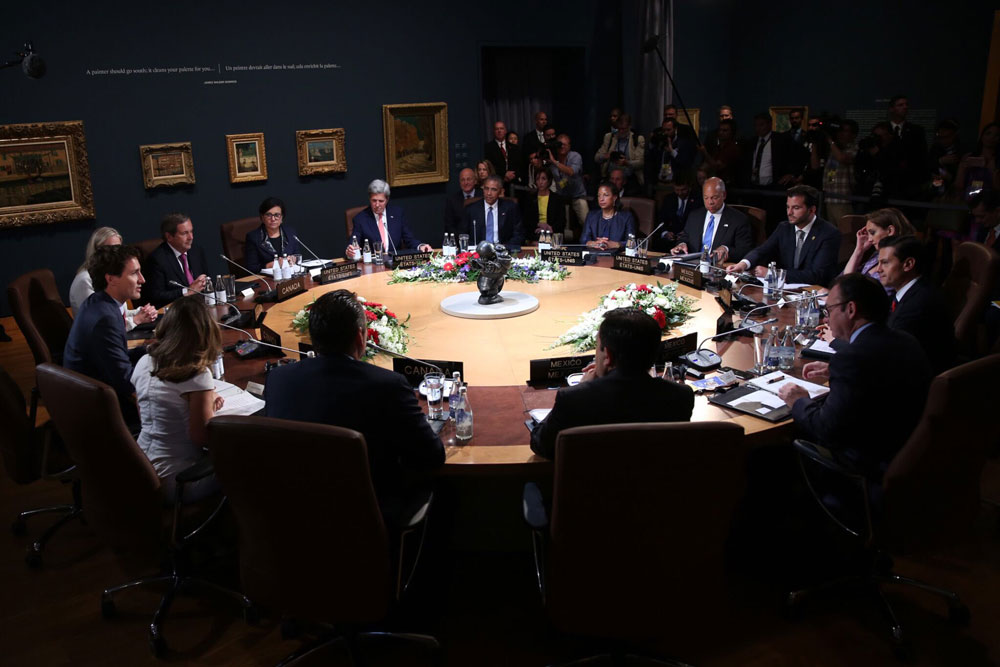On June 29, the National Gallery of Canada played host to a big international political event: the North American Leaders’ Summit, where Canadian Prime Minister Justin Trudeau met with American President Barack Obama and Mexican President Enrique Peña Nieto to discuss economic and political strategies.
Though most eyes were on the leaders themselves, it is also worth considering what art was in the background (and sometimes, the foreground) of their discussions.
A plenary session involving all three leaders, as well as several members of each country’s administration, took place in the NGC’s Ash K. Prakash Gallery, named after Toronto collector A.K. Prakash in recognition of his recent donation of 50 paintings by Canadian modernist painter James Wilson Morrice (1865-1924), valued at $20 million.
Also in the Prakash Gallery during the talks, besides works by Morrice, were works by David Milne (1882—1953) and Emily Carr (1871—1945).
On the table was a sculpture by Inuit artist Johnny Inukpuk (1911—2007).
Bilateral meetings also took place in the Canadian and Aboriginal Art section of the NGC.
And while at the gallery, Prime Minister Trudeau, President Obama and President Peña Nieto briefly visited one of the gallery’s temporary exhibitions featuring the work of one of Mexico’s masters, Rufino Tamayo (1899–1991), an independent artist who embraced modernity.
According to a spokesperson from Global Affairs, “the National Gallery of Canada was chosen as the ideal location for this important event given its central location, its iconic building, its significant cultural value and its capacity to accommodate all operational requirements of the meeting.”
Though the Global Affairs spokesperson did not go into details about “the operational requirements of the meeting,” a layperson looking at the National Gallery of Canada can easily speculate on its security advantages: it is bounded on two sides by steep slopes heading down to the Ottawa River, making it easier to secure, in some ways, than a locale surrounded on four sides by other buildings and roadways. The gallery is also literally 5 minutes’ walk from the US Embassy, which is the closest building when heading south from the gallery on Sussex Drive.
The spokesperson also noted that the gallery itself has been a site of exchange between the US, Canada and Mexico.
“In recent years, the gallery has been working closely with the American Embassy to present recurring lectures with American contemporary artists and is also collaborating with Mexico’s Museo de Arte Moderno to present the work of a significant Mexican artist during the summer of 2016,” the Global Affairs spokesperson said.
Art galleries are no strangers to international diplomacy—in April, New York’s Whitney Museum played host to Prime Minister Trudeau and other international leaders during a United Nations Paris Agreement Signing Ceremony Dinner.
This is the first time the North American Leaders’ Summit was held in Canada since 2007.

 Works by J.W. Morrice, David Milne, and Emily Carr hung on the walls during the North American Leaders' Summit at the National Gallery of Canada. A sculpture by Inuit artist Johnny Inukpuk sat on the table. Photo: Twitter.
Works by J.W. Morrice, David Milne, and Emily Carr hung on the walls during the North American Leaders' Summit at the National Gallery of Canada. A sculpture by Inuit artist Johnny Inukpuk sat on the table. Photo: Twitter.







